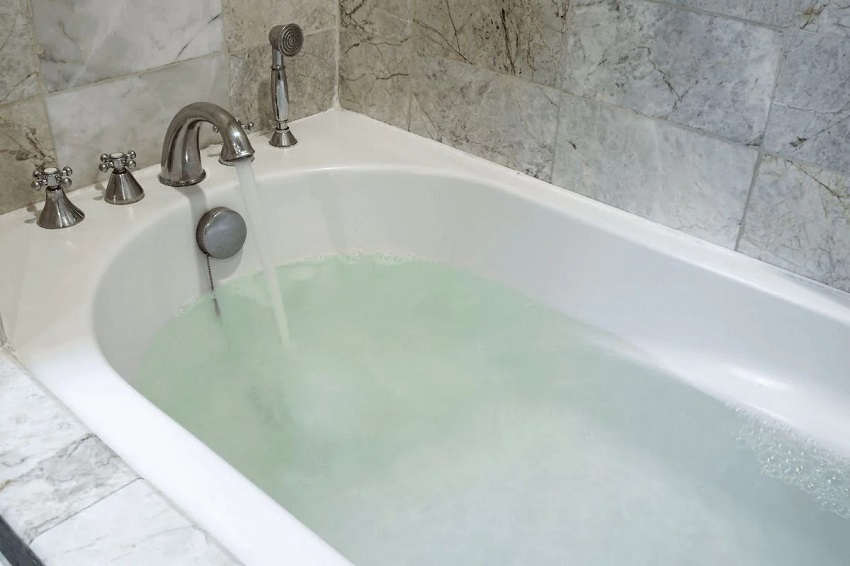
When it comes to relaxing, one of the essential components of a bathtub is its drain. Have you ever wondered how a bathtub drain actually works? In this article, we will delve into the inner workings of a bathtub drain, exploring its mechanisms and the important role it plays in keeping your bathtub functional and free from unwanted water accumulation.
The Basics of a Bathtub Drain
Understanding the Drain and its Assembly
Understanding the tub drain system is essential when it comes to maintaining your bathroom plumbing. A tub drain diagram can visually represent how water flows through the drain and helps you identify any potential issues. By familiarizing yourself with the tub drain diagram, you can troubleshoot common problems like clogs and leaks more effectively. The main parts of a typical bathtub drain assembly include:
- Drain Flange: The drain flange is the visible part of the drain that you can see when you look at the bottom of your bathtub. It is typically circular and located near the center. The drain flange is responsible for holding the drain cover in place and preventing any objects from falling into the drain pipe.
- Overflow Drain: Many bathtubs have an overflow drain to prevent water from overflowing. This drain is positioned higher than the main drain and has an overflow plate with small holes that allow excess water to escape.
- Drain Pipe: The drain pipe connects the drain assembly to the main plumbing system. It serves as a conduit for water to flow out of the bathtub and into the wastewater system.
- Trip Lever or Toe-Touch Stopper: The trip lever or toe-touch stopper is a device that controls the opening and closing of the drain. It allows you to plug or unplug the drain to fill or empty the bathtub.
How Does the Bathtub Drain Work?
When you’re ready to drain the water from your bathtub, you simply pull up on the trip lever or push down on the toe-touch stopper. This action raises the stopper, creating an opening for the water to flow through. As the water enters the drain, gravity takes over, pulling the water down the drain pipe and into the wastewater system.
At the same time, if the water level reaches the overflow drain, it will start flowing into the overflow drain holes and through the overflow pipe, preventing any potential overflow. This ensures that your bathtub doesn’t become flooded and helps maintain a consistent water level.
Different Types of Bathtub Drains
Now that we understand the basic components and workings of a bathtub drain, let’s explore some of the different types of drains you might encounter:
1. Pop-Up Drains
Pop-up drains are a common type of bathtub drain that features a stopper that can be raised or lowered by pushing or pulling a lever or knob. When the stopper is lifted, it creates an opening for the water to flow out. Pushing it down seals the drain, allowing you to fill the tub with water.
2. Trip Lever Drains
Trip lever drains, also known as plunger-style drains, use a trip lever mechanism to control the opening and closing of the drain. When you lift the trip lever, it raises the stopper, allowing water to drain. Pushing it back down closes the drain.
3. Toe-Touch Drains
Toe-touch drains are operated by pressing or releasing the stopper with your toe. They typically have a smooth, flat surface and provide a convenient hands-free method of opening and closing the drain.
4. Lift-and-Turn Drains
Lift-and-turn drains require you to lift the stopper and then turn it to either hold it in the open or closed position. They are commonly found in older bathtub models.
Maintaining and Troubleshooting Bathtub Drains
To ensure your bathtub drain continues to work efficiently, it’s important to perform regular maintenance and address any issues that may arise. Here are a few tips for maintaining and troubleshooting your bathtub drain:
- Keep it clean: Regularly clean your drain to remove any debris or hair that may accumulate over time. Use a drain cover or strainer to prevent large objects from entering the drain.
- Avoid clogs: Be mindful of what you allow down the drain. Avoid pouring grease, oil, or large amounts of hair into the drain, as these can lead to clogs.
- Address slow drainage: If you notice water draining slowly, it could be an indication of a partial clog. Try using a plunger or a drain snake to dislodge any obstructions. If the problem persists, consider seeking professional help.
- Fix leaks promptly: If you notice any water leakage around the drain assembly, it’s important to address it promptly. Leaks can lead to water damage and further complications if left unattended.
Remember, if you encounter any complex issues or are unsure about handling the maintenance or repair yourself, it’s always best to consult a professional plumber for assistance.
Conclusion
Understanding how a bathtub drain works can help you appreciate the intricate mechanisms behind this essential component of your bathing experience. From the drain assembly to the various types of drains available, each element plays a vital role in ensuring efficient water flow and preventing overflow.
By maintaining your bathtub drain and addressing any issues promptly, you can enjoy a hassle-free bathing experience while ensuring the longevity of your bathtub. Remember to clean the drain regularly, avoid clogs, and seek professional help when needed. Now that you have a better understanding of how a bathtub drain works, you can confidently relax and enjoy your bath knowing that the water will drain away smoothly.

